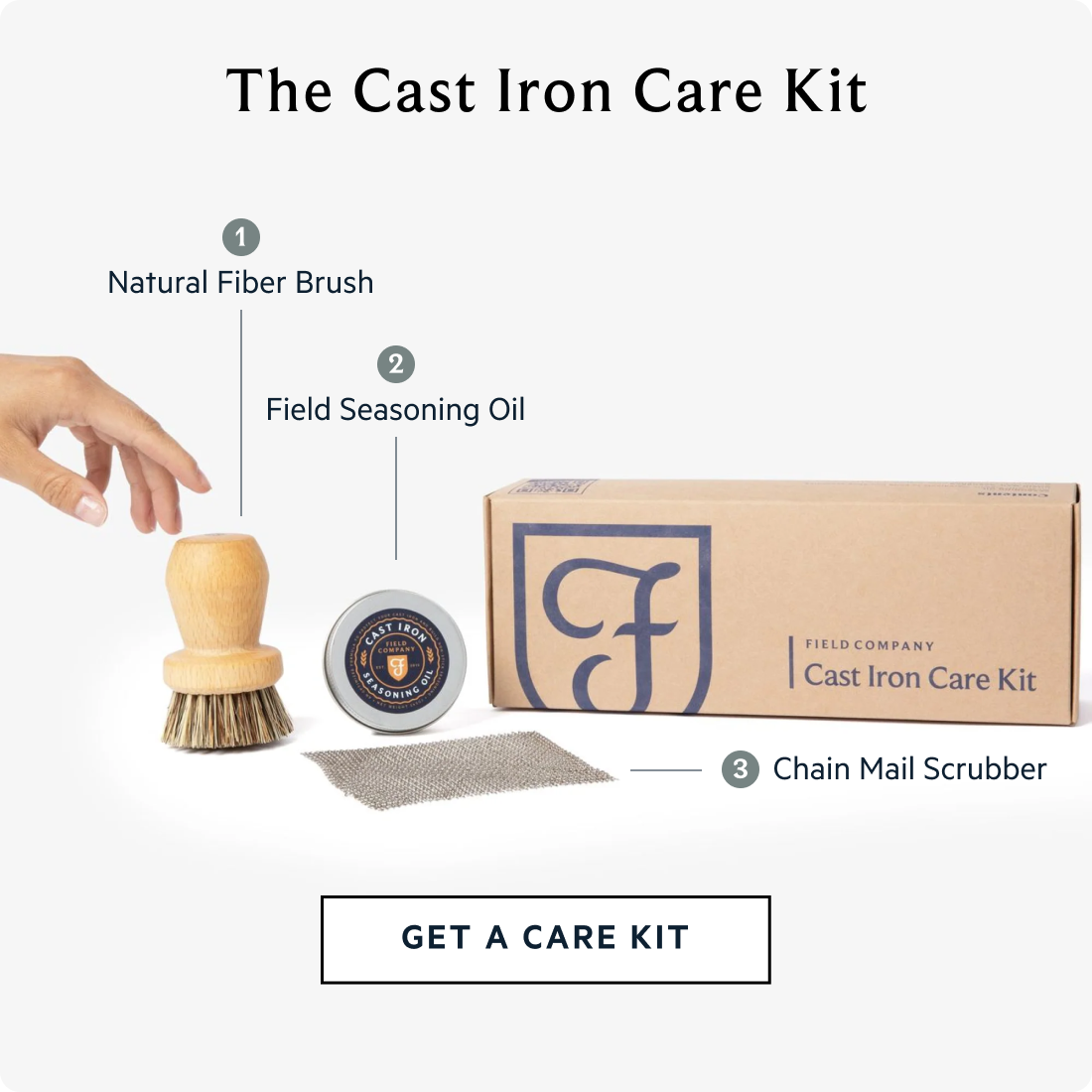The Importance of Preheating Cast Iron
To get the most out of your cast iron pan, it's important to preheat it on low (3-5 min) before cooking.
1. Preheat for even, maintained temperature.
While cast iron retains heat very well, it doesn't conduct heat quickly. Preheating allows time for heat to fully penetrate so the entire pan reaches the desired temperature. Adding food cools the pan slightly, but preheating builds up enough heat energy to minimize temperature drops and recover quickly. This prevents hot/cold spots and maintains optimal cooking temperature.
2. Preheat for better nonstick.
Adding food to a hot pan also helps prevent sticking. When cast iron is ripping hot, the Maillard reaction that browns and sears foods happens almost instantly. Fast browning means foods release easier before they have a chance to stick. High heat causes protein in foods like eggs and meat to coagulate and firm up rapidly. Less time spent in a loose, tacky state means less opportunity for sticking.
3. Preheat for building seasoning.
The last step of our recommended cleaning approach pan instructs to coat the pan in a very thin layer of seasoning oil. This protects the pan between uses, but also becomes part of your seasoning. Preheating your pan gives this oil a chance to polymerize, creating an even and slick layer of durable nonstick seasoning.

Taking a few extra minutes to properly preheat delivers big benefits for cooking results and pan care. Here are a few additional preheating tips to keep in mind:
Preheat on low, especially on electric and induction stovetops.
When cast iron is heated too quickly some parts of the metal can expand faster than others and that can lead to warping (often noticed when a pan wobbles slightly on a flat surface). Low, gradual preheating prevents damage from uneven expansion. This is especially important for electric and induction cooktops which get very hot, very fast with that heat concentrated in a smaller area.
Add cooking oil after preheating.
If your cooking oil is heating for too long before you start cooking it could reach it’s smoke point and start to polymerize, which could turn sticky and smelly. Plus, a hot pan helps the oil spread thinly and evenly over the cooking surface.
Keep an eye on your temperature.
Cast iron gets hotter than many other pan types due to its superior heat retention. You may need to use a lower heat setting than you are used to with other types of cookware. Adjust your burner temperature accordingly, especially if new to cast iron cooking.
Making the effort to properly preheat your cast iron delivers big rewards in terms of cooking performance and pan care—your food and cookware will thank you.
Stay in touch.
We're not just a company, we're cast iron nerds. Sign up for cast iron recipes, how-tos, and new deals.



